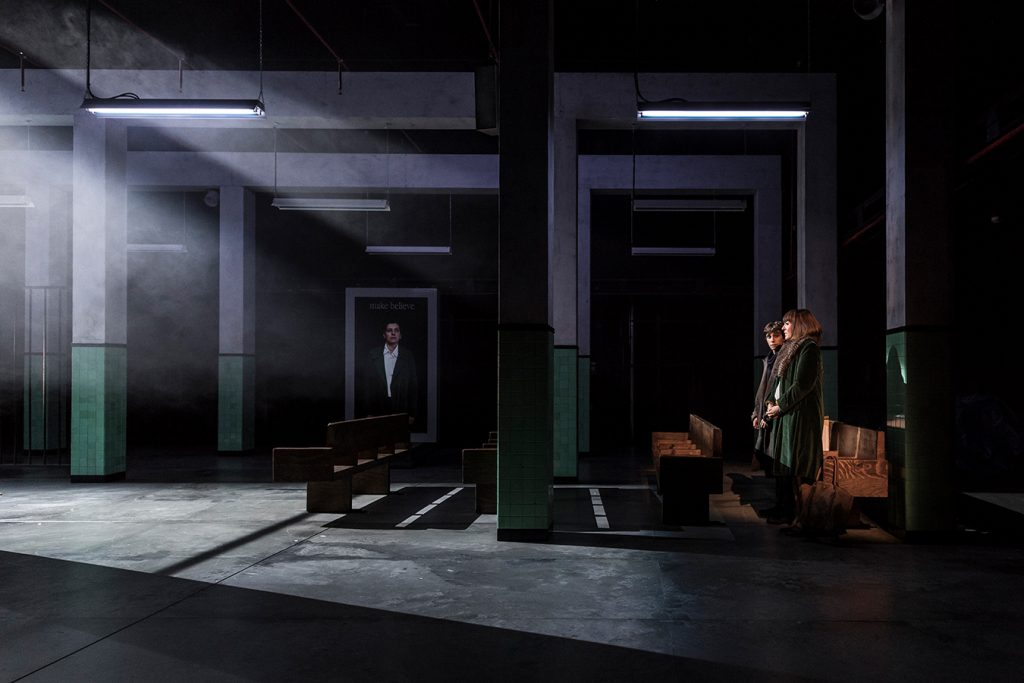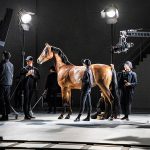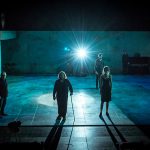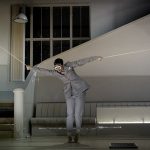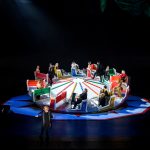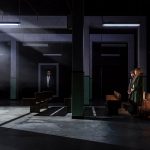Graduated in Industrial Design at Escola Massana, Barcelona. He works as a scenographer since1994. He is a usual team member of Àlex Rigola, Carlota Subirós, Marcos Morau, Sergi Belbel,Xavier Albertí and David Selvas, among others. His works have been shown in theaters such asTeatre Nacional de Catalunya, Teatre Lliure, Sala Beckett, Centro Dramático Nacional,Schaubühne and Schauspielhaus Düsseldorf. In the last three years, he has worked withGöteborgs Operans Danskompani, The Royal Danish Theater, Teatro Stabile del Véneto, Teatrosdel Canal and Mercat de les Flors.
Home » Secció PAÏSOS I REGIONS » ESCENÒGRAFES PARTICIPANTS » MAX GLAENZEL
MAX GLAENZEL
While we are negotiating our way through the groups of tourists and people pushing their shopping trolleys along the narrow pavements of Carrer Nou de la Rambla, where Max has his house-studio, we try to recall all the stage designs by him we’ve seen. Impossible. Every time the list seems complete, another one comes to mind. Born in Barcelona in 1971, Max studied Industrial Design at the Massana School and, as he tells us, he got into set design “by chance”. The first time was in 1993, as an artistic tandem with Estel Cristià, with whom he would spend much of his career. And since then the scenographic entropy has continued, resulting in an innumerable number of ephemeral spaces.
The shelves of Max’s studio, on which around twenty models from past projects sit together, help us to remember. And, yet, Max describes the moment in which he currently finds himself as one of crisis and transformation. Regularly working with Sergi Belbel, Carlota Subirós, Àlex Rigola and La Veronal, among others, his work has always been in keeping with the current performing arts. And although he trained in commercial theatre and fringe theatres, with directors who have a classical concept of the misè-en-scène, the new projects he is involved in, marked by the change in both economic and cultural paradigm of recent years, are forcing him to undergo a certain process of unlearning. “Curiously, now that I am grown up,” he tells us, “I’m finding myself breaking structures.”
He explains that he has never had a generic methodology that he could apply to any project but that he has always understood each piece as a game for which he had to invent new rules. This means that, instead of regarding ‒ technical and aesthetic ‒ innovations with suspicion, he throws himself into them. This is the case, he tells us, of digital drawing tools and, indeed, we can see, next to a model, a SketchUp design on his computer. “Our generation trained in a context of a strange balance between precariousness and privilege. The privilege was, in our case, entering the professional world very directly. The current generations, in contrast, have had to train themselves exclusively in a state of precariousness and this means that their artistic ideas are much more daring and exciting. Sometimes, I have the impression that I came late.”
But whether he designs the scenography for a traditional play such as La rosa tatuada directed by Carlota Subirós (2013) or for an installation project such as Macho Man by Àlex Rigola (2018) or a dance piece by La Veronal such as Pasionaria (2018), all his creations are characterised as highly detailed and, in each case, as a small self-contained world. These are some of the features of his work that we have in mind when he points out that he is still looking for himself as a scenographer, and that he is not even sure if the term “scenographer” is the best way of defining him: a question that fits well with his rejection of the idea of “method” and the curiosity that leads him to give each of the spaces he designs its own atmosphere and reality.
Pinning him down a little, we ask him whether all the transformations of the performing arts to which he makes reference will lead to the extinction of the theatre spaces and rituals as we know them. And if it is true that, as Enrique Olmos de Íta used to say, “the seat manufacturers have no future.” Max quickly answers that, if the theatre ritual is meaningful for him it is because this is the space where he has reflected on reality (both as an individual and in a group) very intensively and that he hopes that this special intensity, which he experiences in the process of research and rehearsal, can somehow be reflected in the audience; for the audience to become part of the discussion group. There is something basic in this ritual, he notes, that must be reinvented and must not be lost. “We must not take the seats out completely.”











